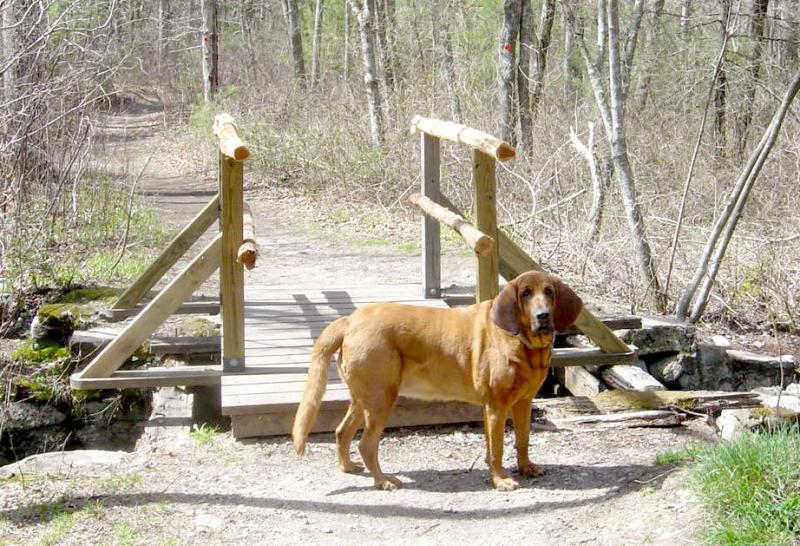6 Commands your dog (and you) should know before hitting the trail
Controlling your dog in the wild outdoors can be challenging with distractions such as joggers, scents, and other canines lurking about. So what exactly is the expectation for dogs and their owners on public land?
Sparked by a number of complaints, the Dartmouth Natural Resources Trust called in dog trainers from Harmonious Hounds — a company run out of Dartmouth and Fairhaven — to teach basic trail etiquette and dog psychology on February 23.
We talked to cofounder Lauren Stamatis for the full do's and don't's before hitting the trails. Here are the top six commands your dog (and you) need to know before heading outside:
Come.
Dogs need to be cognizant of respecting other people's space, especially when people’s fears or another dogs’ health is at risk, said Stamatis.
“It's not fair to say 'my dog is friendly.' You don't get to decide how other people feel about your dog being in their space,” she said. If you couldn’t confidently bet $100 that your dog will come when called, it needs to be on a leash or long line, said Stamatis.
Sit.
When passersby are coming, you are going to not only call your dog to you and have them sit, but you’re going to physically have a hand on your dog, said Stamatis. Trail users are going to feel more comfortable when you’ve got a hold or leash to signal complete control of your dog.
You also want to move off of the trail when someone else is coming. Other people using the trail take precedence to pets, said Stamatis.
Stay.
Duration is one of three factors that can make it easier or harder for a dog to do as commanded, said Stamatis. That’s why when you’re teaching your pooch the “stay” command, you’ll start by holding it for short amounts of time before rewarding them, and working your way up.
The amount of distractions and the distance between you and the dog can also make things challenging, she added. Start with a small amount of one, and slowly build up and add in other variables.
Like humans, dogs can get frustrated when they’re learning new things, so you need to adjust the work to their level, Stamatis noted. If they’re not getting it, return to something easier, like shorter distances and few distractions, she explained.
Leave it.
This allows you to turn your dog away from something of interest and back toward you, said Stamatis.
Drop it.
"This is when they’ve already taken ahold of something you don’t want them to have,” she said.
Leave no trace.
“Our dogs create a lot of waste. As owner, it's your responsibility to take care of it,” said Stamatis. “As someone who lived in Vermont, I'm more of a 'leave no trace' kind of person.” That means she bags it up, and carries it out entirely.
“DNRT has expressed concern with biodegradable bags being left on trail. Those bags only work under extreme heat and extreme pressure, so they become more of a hazard [because of the plastic left on trail],” Stamatis continued. “They would rather have you leave the poop — with no bag — and just get it off the walking path.”
However, poop is also a health risk for the dogs themselves. Some dogs have the bad habit of chowing down feces, which can transmit parasites, said Stamatis.
DNRT will host a dog walk on May 13 at 9 a.m. to encourage pet owners to learn more dog handling techniques. For more information, visit dnrt.org.












